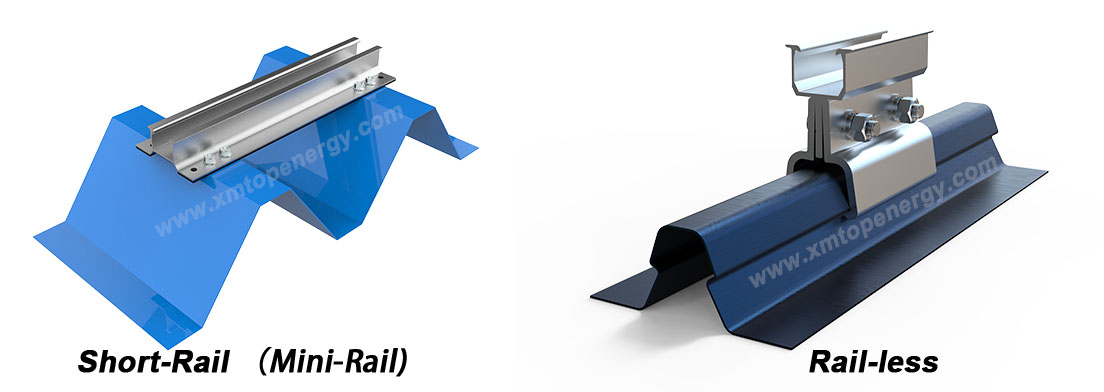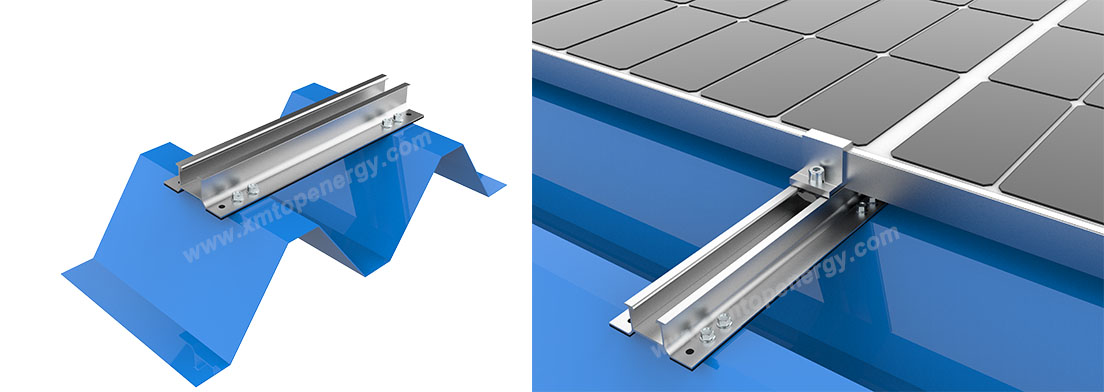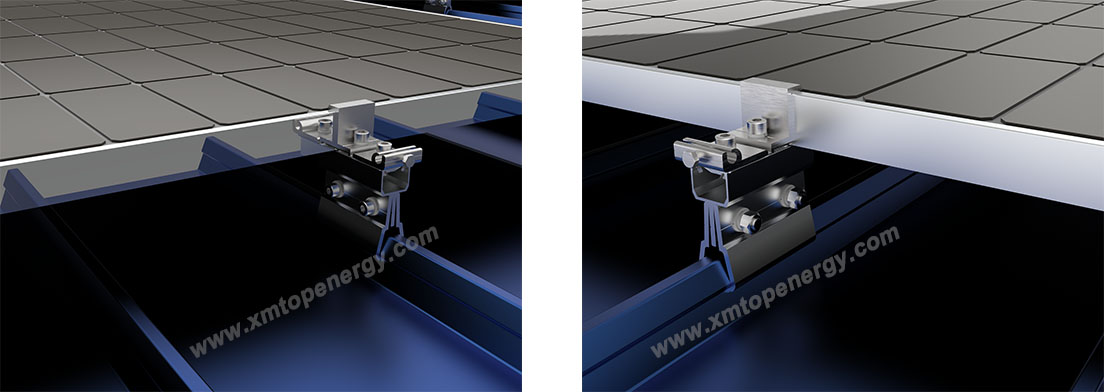As the global demand for solar energy grows, the search for innovative and efficient ways to mount solar panels has never been more important. With advancements in technology and the solar industry evolving rapidly, one of the most debated topics in the world of solar installations is the choice between short-rail(mini-rail) and rail-less solar panel mounting solutions. Both systems have their advantages, and understanding their differences is crucial for homeowners, businesses, and solar installers aiming to optimize performance, cost, and installation time.
In this blog, we’ll explore short-rail and rail-less mounting systems, comparing their features, benefits, and best-use scenarios to help you choose the best solar mounting system for your project.

Short-rail solar mounting systems are a type of solar panel mounting structure where the solar panels are installed on shorter rails that connect the solar panels to the roof. These rails are typically used in traditional, roof-mounted solar panel installations and are supported by the roof structure using a set of brackets or mounts.
Short-rail systems are often characterized by:
· Standard Rail Structure: Panels are secured using pre-manufactured metal rails that extend horizontally across the roof.
· Flexibility: While shorter than traditional long rails, these systems still offer flexibility in terms of panel positioning and roof compatibility.
· Ease of Installation: They are easier to install than traditional full-length rails but still require the attachment of rail systems to the roof structure.
1. Reliable Support: Offers a solid, reliable platform for solar panels with sufficient space for airflow beneath the panels.
2. Easier to Adjust: Short rails provide more flexibility and easier adjustment for solar panel positioning compared to traditional rail systems.
3. Suitable for Various Roof Types: Works well with both flat and pitched roofs, providing greater versatility.
1. Increased Material Cost: Even though short rails are smaller, they still require some material for both the rails and mounting hardware, which can increase costs slightly.
2. Installation Time: While quicker than traditional rail systems, installation may still take more time than rail-less systems due to the need for rail adjustment.

Rail-less solar mounting systems are a modern innovation designed to eliminate the need for rails altogether. In this system, solar panels are directly mounted onto the roof structure using specialized brackets or clamps. These systems allow the solar panels to be installed in a way that minimizes material use and reduces installation time.
Key features of rail-less mounting systems include:
· Direct Panel Mounting: Solar panels are mounted directly to the roof, using rail-less mounting brackets, clips, or fasteners.
· Minimal Components: Fewer components are needed, making the system more streamlined and cost-effective.
· Low Profile: Rail-less systems tend to have a sleeker design, offering a more aesthetically pleasing, lower-profile look for rooftops.
1. Quick Installation: Since there are fewer parts, installation is often faster and simpler. This translates to lower labor costs and reduced overall project timelines.
2. Cost-Effective: Rail-less systems typically cost less because they require fewer materials. The elimination of long rails reduces the overall material cost.
3. Aesthetic Appeal: Rail-less systems have a low-profile design, making them ideal for homeowners and businesses who prioritize aesthetics.
4. Efficiency: With fewer components, the system reduces the risk of potential maintenance issues over time.
1. Roof Compatibility Issues: Rail-less systems may not be compatible with all roof types, particularly those with complex geometry or challenging materials.
2. Less Adjustability: Once the system is installed, there is limited flexibility for repositioning the panels. It’s crucial to carefully plan the panel placement before installation.
3. Potential for More Roof Penetrations: Some rail-less systems may require more roof penetrations, which could lead to potential issues with leaks if not properly installed.

When deciding between short-rail and rail-less solar mounting systems, it’s essential to consider your specific needs, the type of roof you have, and your project goals. Here are some factors to consider:
· Short-Rail Mounting: Ideal for more complex roofs or those with variations in angles or uneven surfaces. The adjustable nature of short rails ensures that your system can be adapted to a variety of roof shapes.
· Rail-less Mounting: Best for roofs with a uniform surface and simple geometry. Rail-less systems can work well on flat roofs or uncomplicated sloped roofs but may not perform as well on roofs with irregular shapes.
· Short-Rail Mounting: While it offers flexibility, the installation can take longer due to the complexity of the system and the need for more components.
· Rail-less Mounting: Rail-less systems are often quicker to install, reducing labor costs and installation time. They are more cost-effective in terms of materials and installation.
· Short-Rail Mounting: Offers a more traditional appearance but still provides a sleek solution for mounting solar panels.
· Rail-less Mounting: If aesthetics are important, rail-less systems are often the better option. They provide a low-profile, sleek appearance that blends seamlessly with the roof.
· Short-Rail Mounting: Short-rail systems tend to offer more stability, particularly in areas with high winds or heavy rainfall. They also provide a bit more flexibility in terms of maintenance, as each panel is easier to access.
· Rail-less Mounting: Rail-less systems are low-maintenance but may have more installation-related issues due to fewer mounting options and more penetrations in the roof.
Both short-rail and rail-less solar mounting systems offer unique advantages and may be suited for different types of solar panel installations. If you have a more complex roof structure, need flexibility, and prioritize durability, a short-rail mounting system might be the best choice. However, if you’re looking for a cost-effective, quick-to-install solution with aesthetic appeal, rail-less mounting could be your ideal option.
Regardless of which system you choose, it’s important to work with a qualified solar installer who can assess your specific needs and recommend the best solution for your home or business. The right mounting system can make all the difference in terms of performance, cost, and long-term durability of your solar energy system.

 Xiamen TopFence Co.,Ltd.
Xiamen TopFence Co.,Ltd. No. 77, LingXia South Road, Huli District, Xiamen City, Fujian, China
No. 77, LingXia South Road, Huli District, Xiamen City, Fujian, China Tel: +8613365923720
Tel: +8613365923720
 Email: info@xmtopfence.com
Email: info@xmtopfence.com
 IPv6 network supported Sitemap
| XML
| Blog
| Privacy Policy
IPv6 network supported Sitemap
| XML
| Blog
| Privacy Policy


